That Dry Winter Air Is Wrecking Your Home (And Your Sinuses). Here’s How to Fix It.
I’ve spent the better part of my career helping people get their home environments right, from huge central systems to the little portable units you see in stores. And honestly, the most misunderstood gadget of them all is the humble humidifier. Most people think you just fill it with water, plug it in, and forget about it. That’s a huge mistake.
In this article
Think of a humidifier as a precision tool. When you know what you’re doing, it can be a total game-changer for your health and even protect your expensive wood furniture. But if you use it wrong? You could be creating a bigger problem than you started with.
My goal here is to cut through the marketing noise and give you the practical, real-world advice I share with my own clients. This isn’t just about making the air feel less scratchy; it’s about creating a genuinely healthy space. So, let’s dive in.
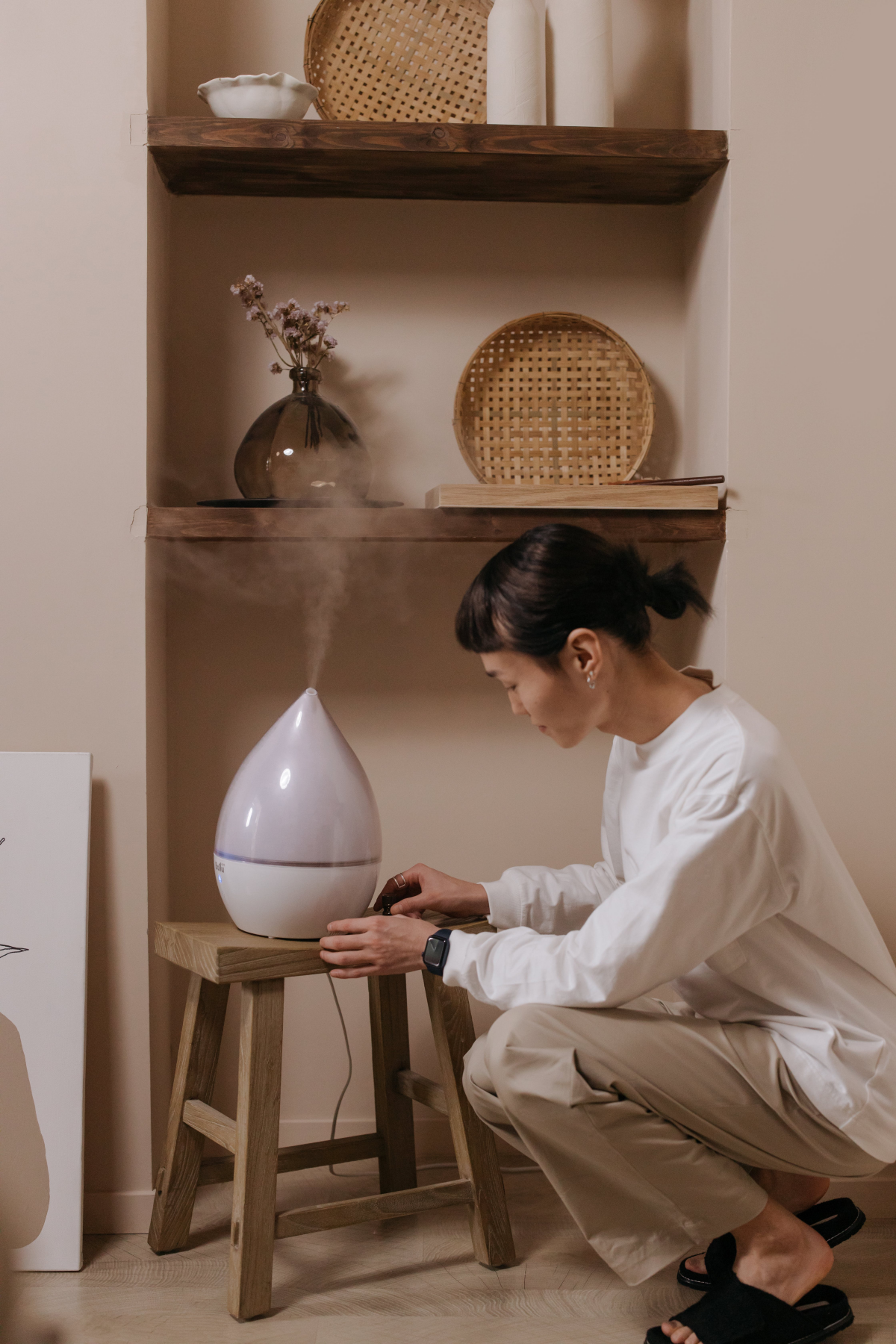
First, Why Does a Dry House Even Matter?
Before we talk about machines, you need to get one thing straight: relative humidity, or RH. Just think of the air in your house as a big sponge. RH is simply a percentage of how full that sponge is with water vapor. At 100% RH, it’s completely soaked.
Here’s the kicker: cold air can’t hold much water. When you take freezing cold air from outside and your furnace heats it up, its capacity to hold moisture skyrockets. But since you haven’t added any new moisture, its relative humidity plummets. It’s not uncommon for indoor RH to drop to 15% or even 10% in the winter. For context, the Sahara Desert is often around 25% humidity. Yeah, your living room can be drier than a desert.
Health and engineering experts agree that the sweet spot for indoor RH is between 30% and 50%. This isn’t just some random number; it’s a balance point for health and home preservation.
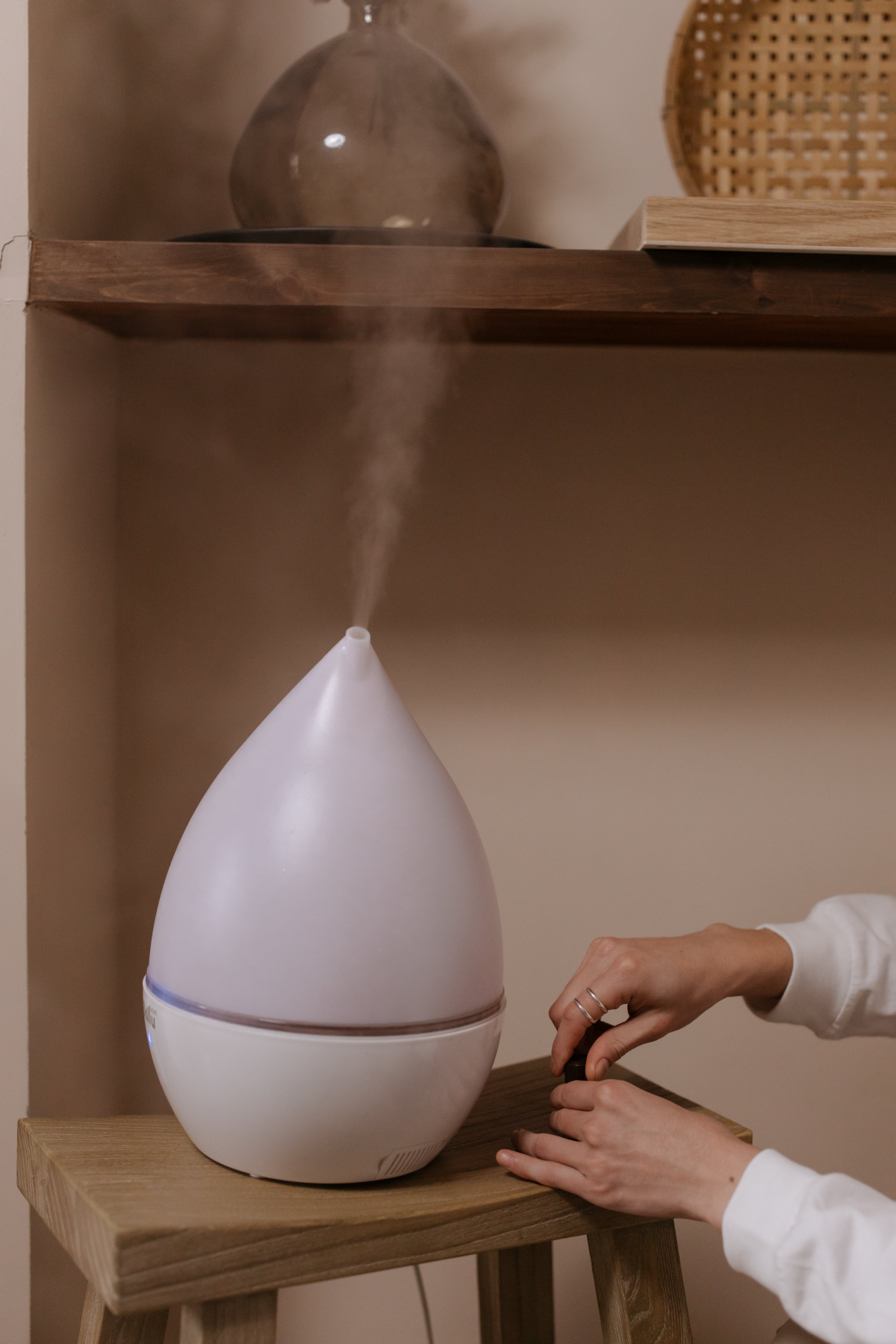
- Below 30% RH: This is prime time for viruses like the flu to hang around longer in the air. Your skin gets itchy, your lips crack, and your nasal passages dry out, making it way easier for germs to get in. Oh, and the constant static shocks are a dead giveaway.
- Above 50% RH: Welcome to the danger zone. This is where mold, mildew, and dust mites throw a party. You’ll often see condensation building up on your windows, which is a big red flag that you’re risking rot in your window frames and walls. If you smell anything musty, you’ve gone too far.
By the way, a neat side effect of proper humidity is that it makes the air feel warmer. Your body feels cooler in dry air because moisture evaporates from your skin. So, by keeping the RH around 40%, you might feel just as cozy with the thermostat at 68°F as you would at 72°F in bone-dry air. It’s a nice little bonus for your heating bill, but the real win is comfort.
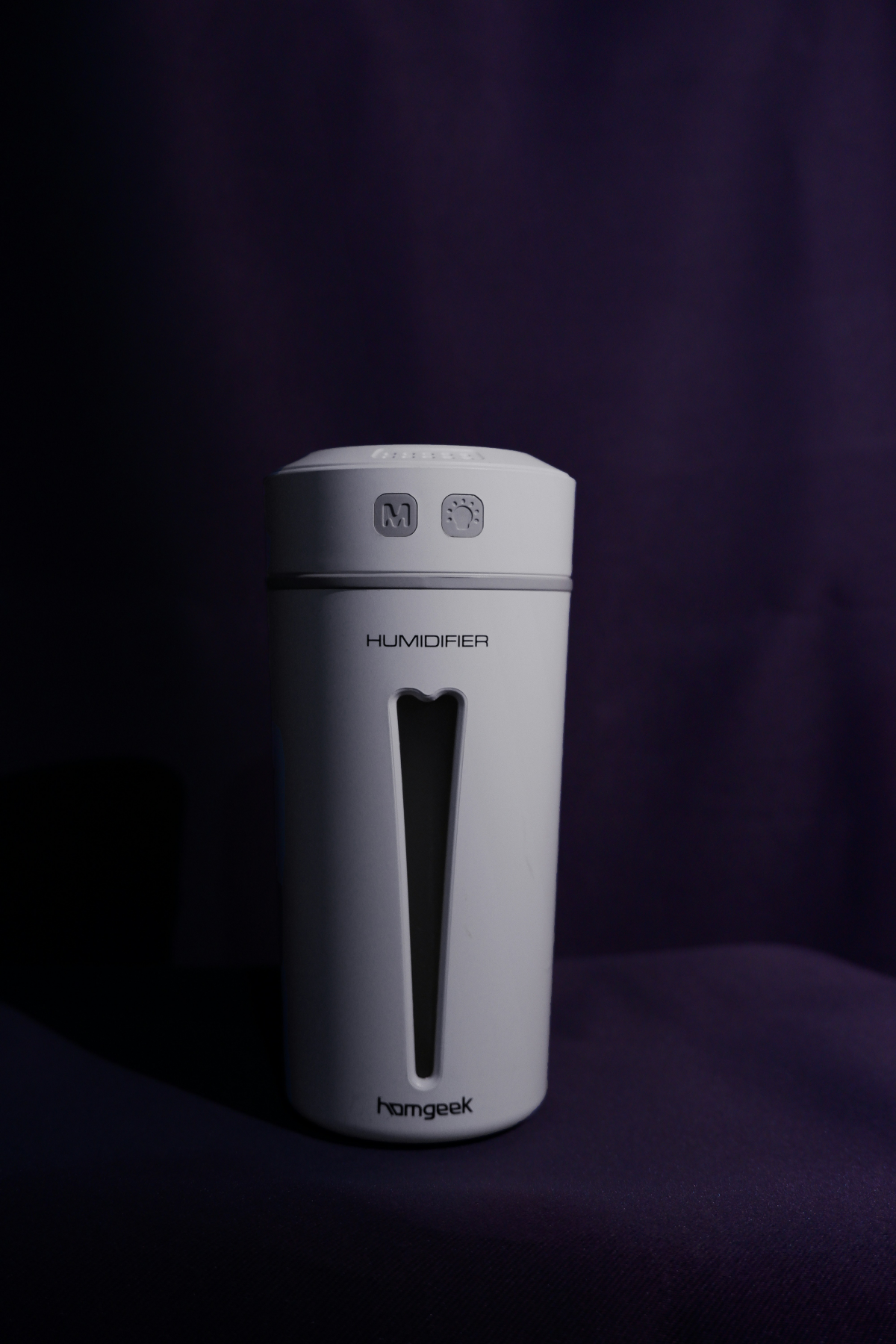
Let’s Go Shopping: Breaking Down the Types of Humidifiers
Walking into a big-box store and seeing a wall of humidifiers is enough to make anyone’s head spin. They all have their place, but the best one for you really depends on your water, your budget, and how much cleaning you’re willing to do.
1. Evaporative Humidifiers (Cool Mist)
This is my go-to recommendation for most people. It’s a pretty simple concept: a fan blows air through a soggy, paper-like filter called a wick. The water evaporates into the air, and that’s it. Simple and effective.
- The Good: The best thing about these is that they’re basically self-regulating. The air will only absorb as much moisture as it can hold, so it’s really hard to over-humidify a room. They’re a safe bet. A decent unit will run you anywhere from $40 to $120.
- The Catch: That wick filter is the weak spot. Since it’s always wet, it can become a breeding ground for mold if you neglect it. You absolutely have to replace it, usually every 1-3 months. A new filter typically costs about $10 to $20. If it gets hard, crusty, or discolored, change it immediately. They also make a bit of fan noise, which can be a pro or con depending on if you like white noise.
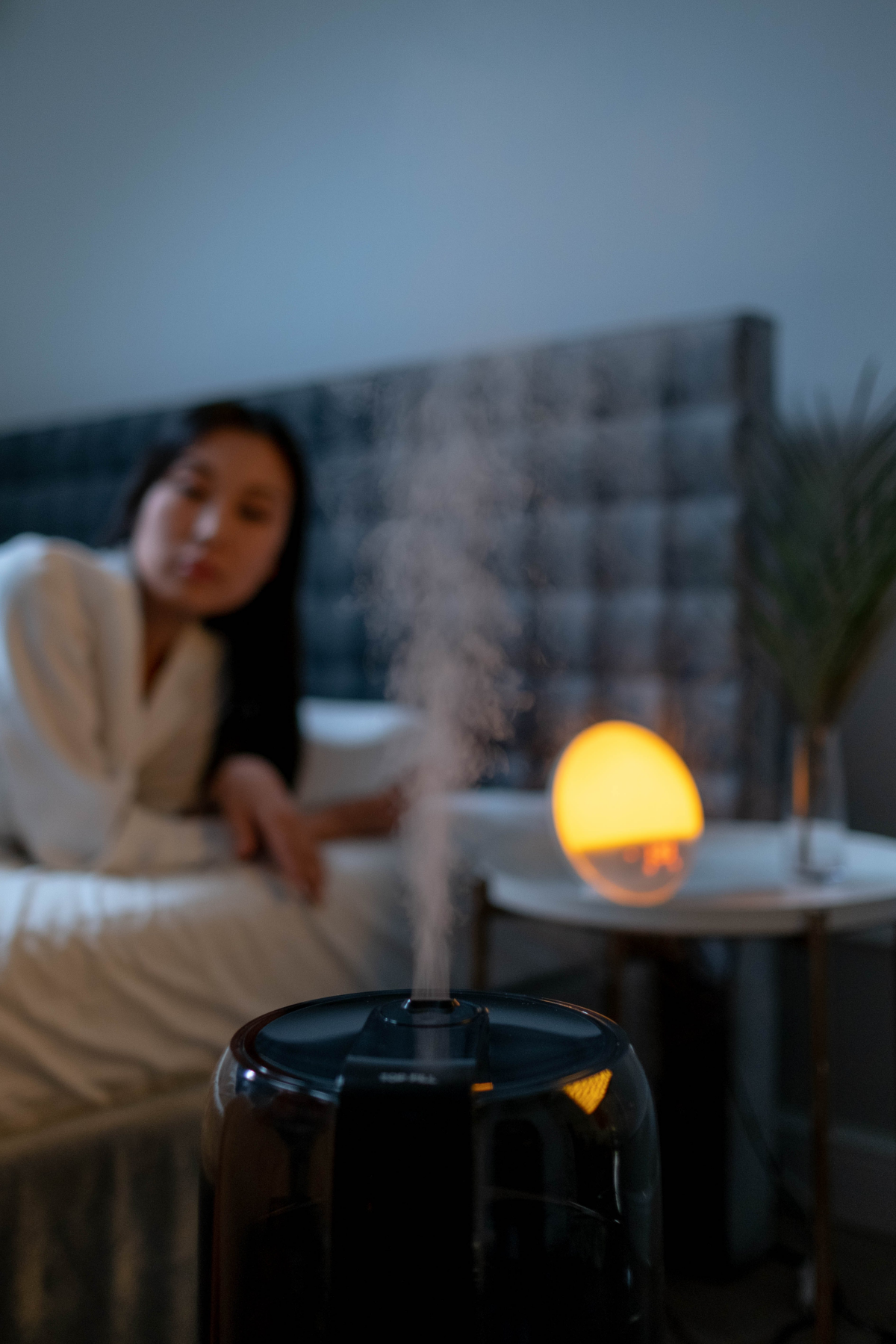
2. Ultrasonic Humidifiers (Cool or Warm Mist)
These are super popular because they are whisper-quiet. They use a tiny metal plate that vibrates at an ultrasonic frequency, which breaks the water up into a fine, visible mist.
- The Good: They’re silent and very efficient at pumping out moisture. Price-wise, they are similar to evaporative models, usually in the $50 to $150 range.
- The Catch: Here’s the big one: “white dust.” If you use regular tap water, the machine will also vaporize all the minerals in it (like calcium and magnesium). This fine white powder settles on EVERYTHING. I once had a client who used tap water in an ultrasonic unit for a month and called me because his new black TV console looked like it was covered in gray spray paint. We even found the dust inside his gaming PC. Because of this, you should ONLY use distilled or demineralized water in these. That can get pricey at about $1 a gallon. Also, since they’re so effective, they can easily make a room too humid. A separate hygrometer is non-negotiable here.
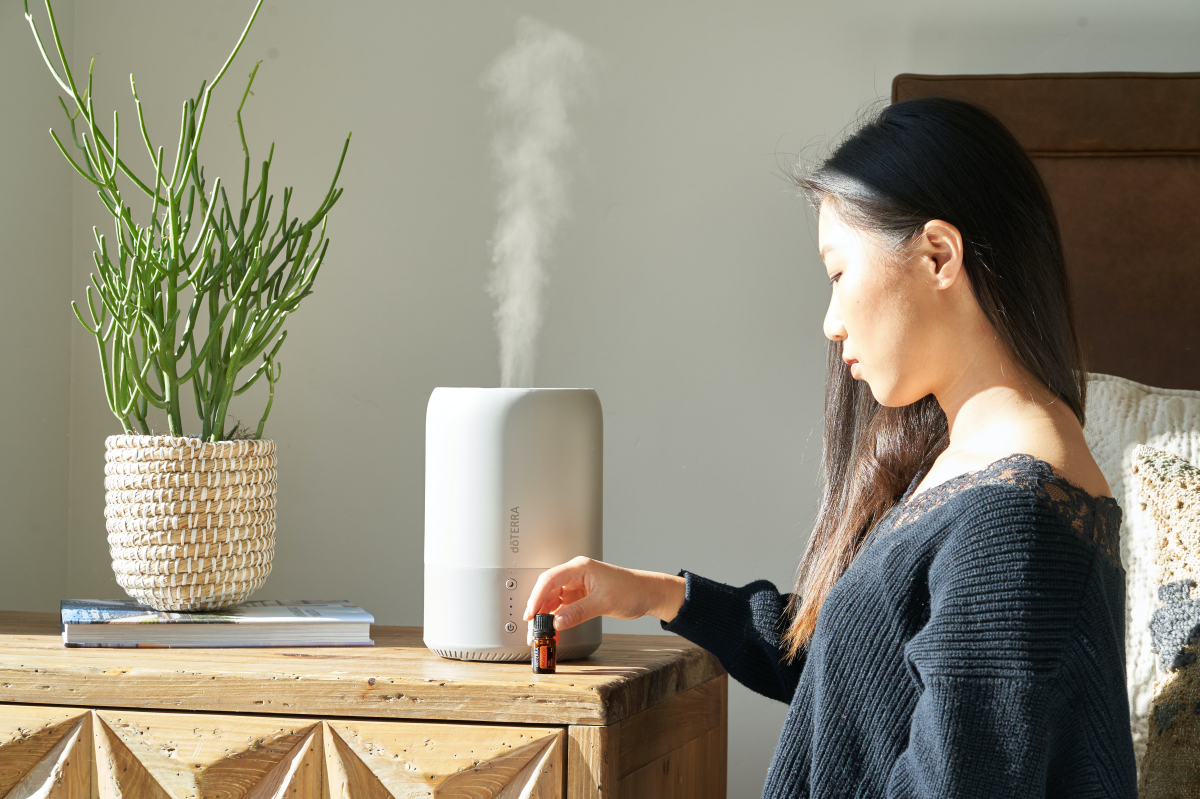
3. Steam Vaporizers (Warm Mist)
These are the old-school classic. A heating element just boils the water and releases warm steam. It’s as basic as it gets.
- The Good: The boiling process kills any bacteria or mold in the water, so the steam is clean. They’re also cheap to buy, often just $20 to $50. The warm mist can make a room feel extra cozy, which is nice when you’re sick.
- The Catch: The boiling water is a serious burn risk. I’ve seen some nasty accidents. I never, ever recommend these for homes with small kids or curious pets. A single tip-over can be a disaster. They also use more electricity than other types and need to be cleaned often to get rid of mineral buildup on the heating element.
4. Whole-House Humidifiers
This is the top-tier solution, tying directly into your home’s central furnace and ductwork to humidify the entire house at once.
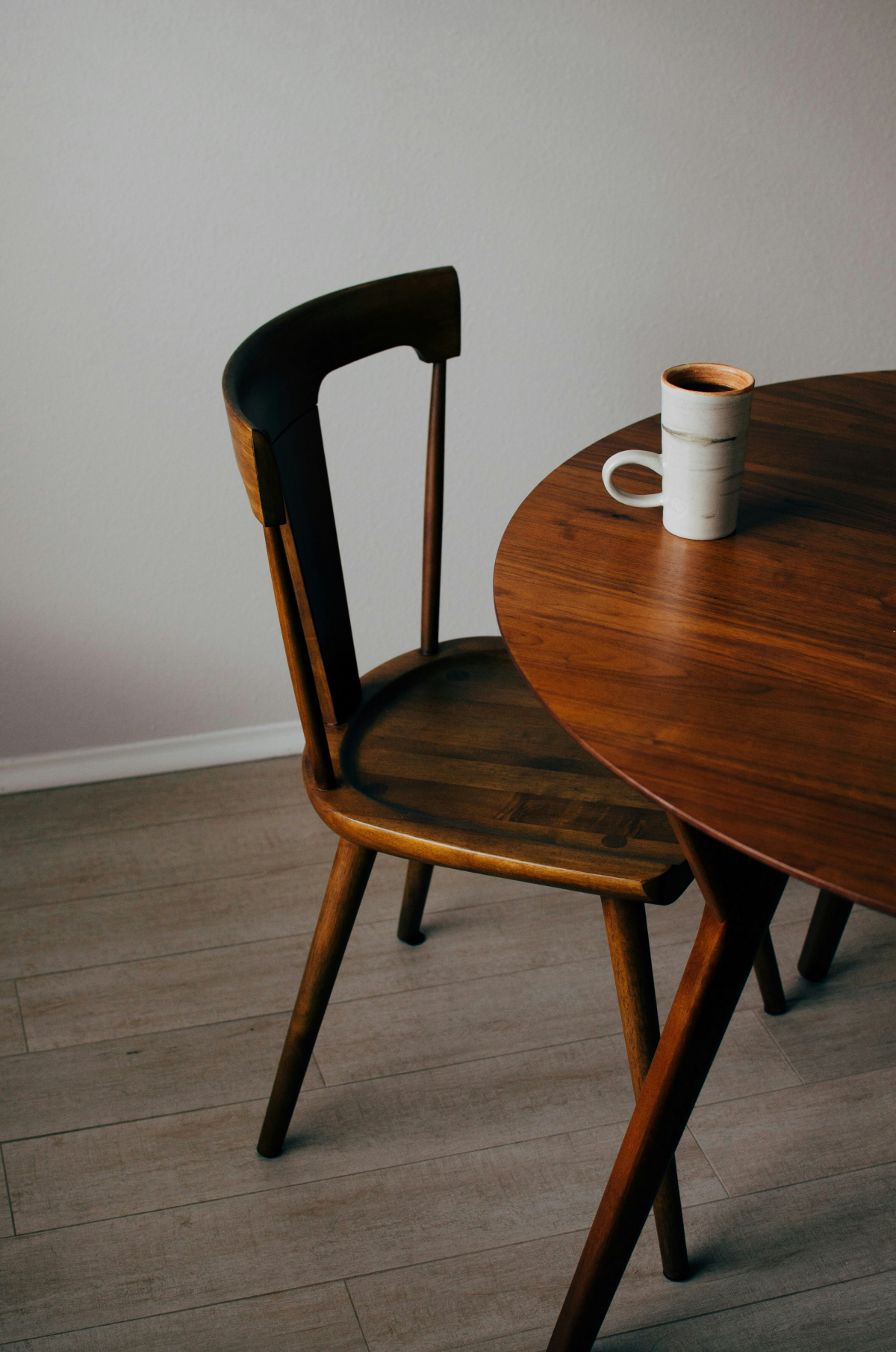
- The Good: It’s the most effective and “set it and forget it” option for consistent humidity everywhere.
- The Catch: This is a professional job and it’s not cheap. Expect to pay between $500 and $2,000+ for professional installation by an HVAC contractor. And it’s not truly maintenance-free. The water panel needs to be replaced yearly (a job for your HVAC guy during a furnace tune-up), and you have to make sure it’s working right. This is not a DIY project—a leak inside your furnace can cause catastrophic damage.
Okay, You Bought One. Now Don’t Mess It Up.
Getting the machine is just step one. Using it correctly is what really counts.
Placement Is Everything
Where you put your humidifier matters. A lot.
Get it up off the floor. The ideal spot is on a flat, waterproof surface (put a tray underneath if you’re worried) at least two feet off the ground, like on a dresser or small table. This helps the mist circulate properly. Keep it at least a foot away from walls and, crucially, away from your thermostat. The cool mist can trick your thermostat into thinking the room is colder than it is, making your furnace work overtime.
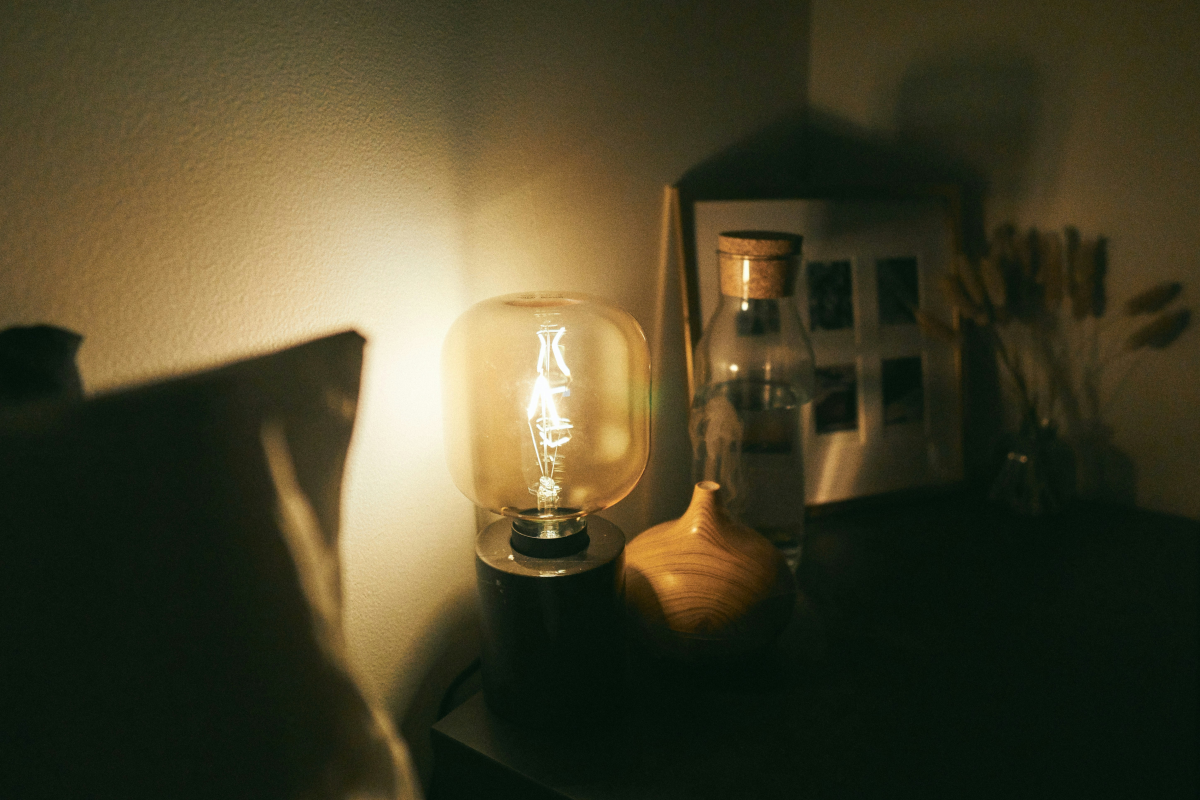
The Great Water Debate: Distilled vs. Tap
Let’s be blunt. If you bought an ultrasonic humidifier, you have to commit to using distilled water. Period. The white dust isn’t just annoying; breathing in that fine particulate matter isn’t great for anyone, especially people with sensitive lungs. For an evaporative model, tap water is generally fine since the minerals get left behind on the filter (that’s why it gets crusty).
Maintenance: Your Non-Negotiable Chore
This is the most important part of this whole guide, so pay attention. A dirty humidifier is a health hazard that can pump mold and bacteria into your air, leading to respiratory issues sometimes called “humidifier fever.”
- Daily: When you refill it, dump out the old water from the tank and the base. Give it a quick rinse and wipe it dry before adding fresh water. Never just top it off.
- Weekly: Time for a deep clean. Fill the tank and base with a solution of one part white vinegar to two parts water. Let it soak for about an hour to dissolve any mineral scale. Use a small brush (an old toothbrush is perfect) to get into the nooks and crannies. Then, rinse everything thoroughly with clean water until the vinegar smell is gone.
- Quick Tip for Storage: When winter ends, don’t just shove it in a closet. After a final deep clean, make sure every single part is BONE-DRY before you pack it away. Otherwise, you’ll be opening a box of mold next fall.

Your Most Important Tool: A Separate Hygrometer
Don’t trust the little humidity gauge built into your machine. They’re almost always wrong because they’re measuring the air right next to the mist.
Your task for today: Go buy a digital hygrometer. You can find them for about $15 at places like Home Depot or online. Place it across the room from the humidifier to get a true reading. You can’t manage what you don’t measure, and this is the single best investment you can make.
(Want to nerd out? You can even check if your hygrometer is accurate with the “salt test.” Just put a half-cup of table salt in a small bowl, add a splash of water to make a thick, damp paste (not a puddle), and seal the bowl and your hygrometer in a large Ziploc bag. After 8-12 hours, a perfectly calibrated hygrometer should read exactly 75%. If yours reads 72%, you know it’s off by -3%. It’s a neat little trick the pros use.)
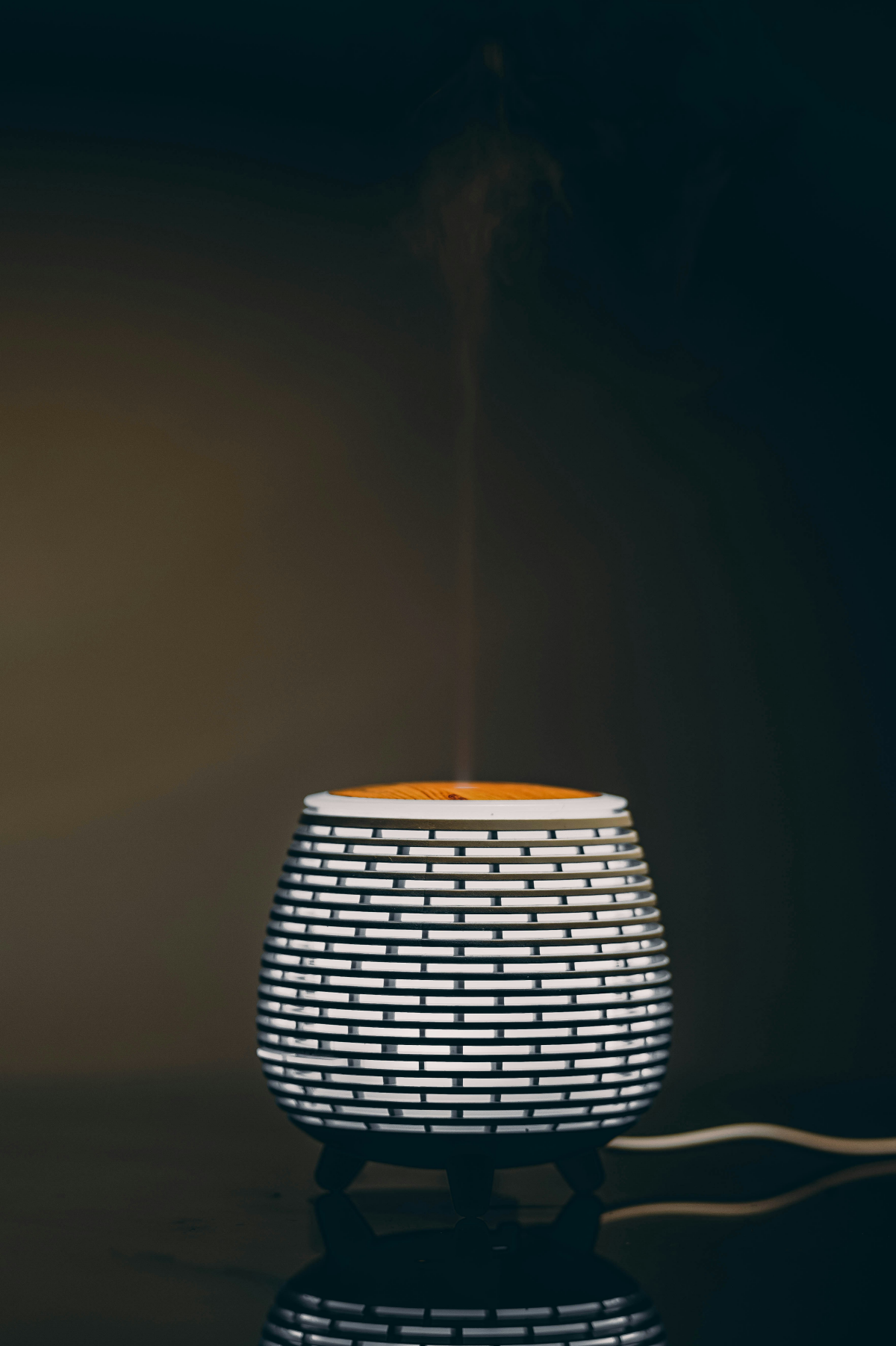
Common Problems & Quick Fixes
Running into trouble? Let’s troubleshoot.
- Problem: There’s a musty or mildewy smell.
Fix: Stop using it immediately. That’s a sign of mold or bacteria. Do a full vinegar deep clean and replace the filter. If the smell persists, throw the unit away. It’s not worth the risk. - Problem: There’s white dust on all my furniture.
Fix: You’re using an ultrasonic humidifier with tap water. There’s no other cause. Switch to distilled water, period. - Problem: The humidity level isn’t going up.
Fix: Check your filter—it might be old and clogged. Also, be realistic. A small tabletop unit isn’t going to humidify a giant, open-concept living room. Make sure the unit is properly sized for your space (the box usually gives a square footage recommendation). - Problem: There’s water pooling around the unit.
Fix: You probably have it set too high for the room’s conditions. The air is saturated and the excess moisture is just falling out. Turn the setting down.
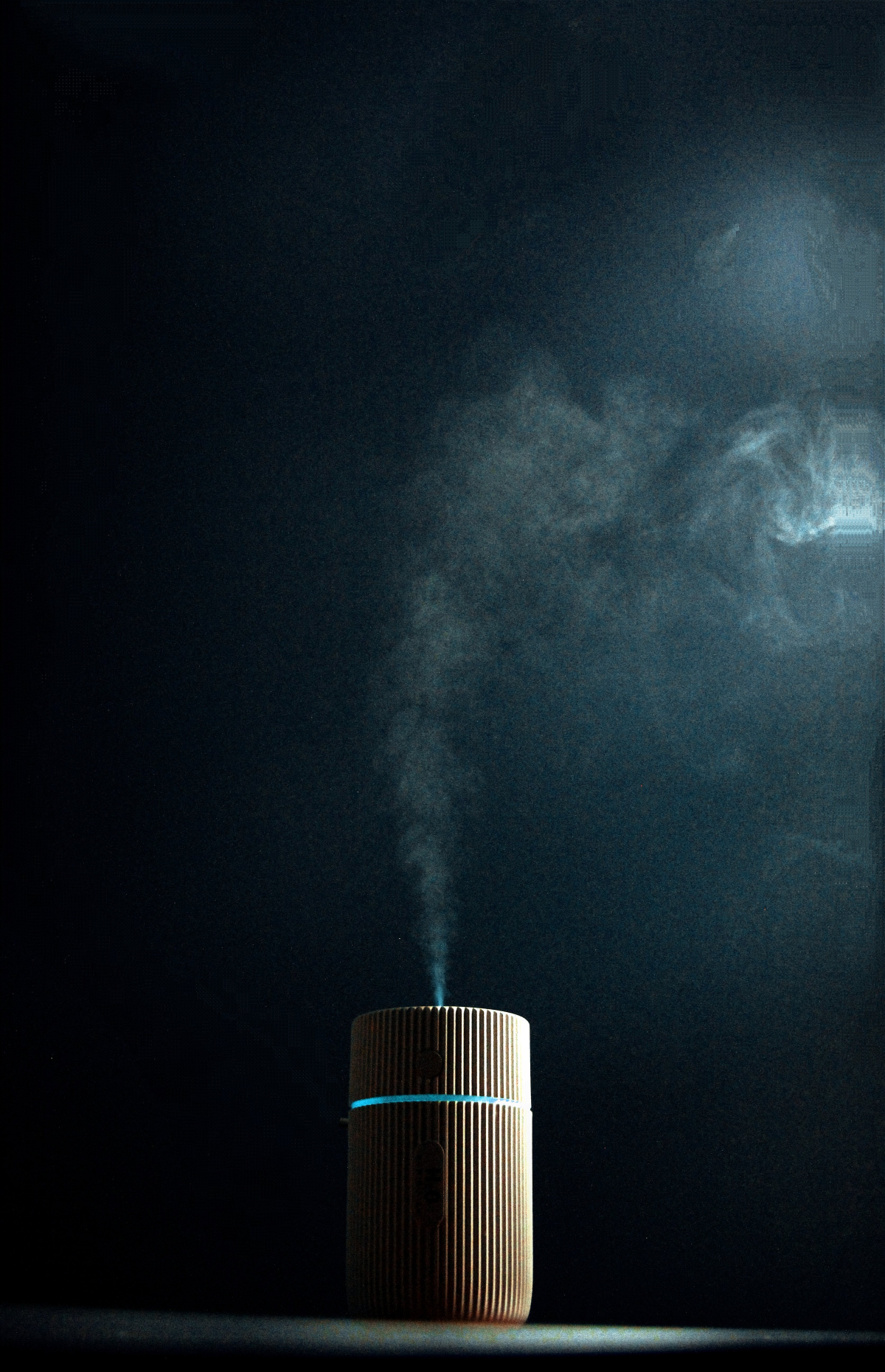
A Final Word on Safety
I can’t stress this enough. A humidifier is a tool, and like any tool, it needs to be respected.
If you opt for a steam vaporizer, keep it far away from kids and pets. That steam can cause a nasty burn in an instant. And remember, a humidifier is for comfort, not a medical device. If you have serious asthma or other respiratory conditions, talk to your doctor before using one.
When you get it right, though, the difference is night and day. No more scratchy throats, zapping the cat with static electricity, or watching your beautiful wood floors shrink. Take care of your air, and it’ll take care of you.
Galerie d’inspiration

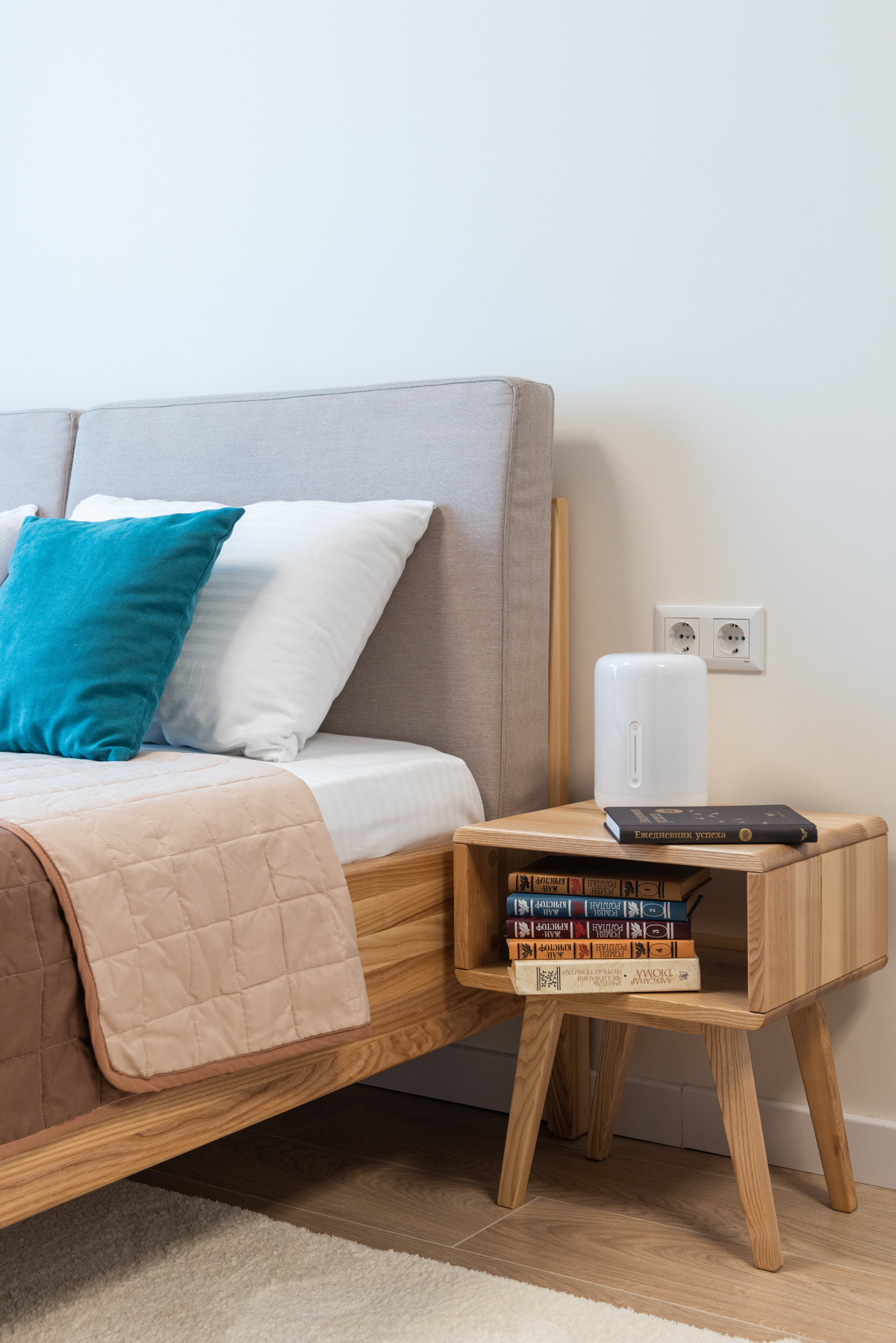
Ultrasonic Cool-Mist: These models, like the popular Levoit Classic 300S, use high-frequency vibrations to create a fine, visible mist. They are exceptionally quiet, making them ideal for bedrooms and offices. Their main drawback is the potential for “white dust” (mineral deposits from tap water) to settle on furniture if you don’t use distilled water.
Evaporative: These units use a fan to blow air through a moistened wick or filter. They are self-regulating—as humidity rises, the evaporation rate naturally slows down. They don’t produce white dust but require regular filter replacements and have a low fan hum.
For silent operation near your bed, go ultrasonic. For a set-it-and-forget-it approach in a living area, evaporative is a solid choice.
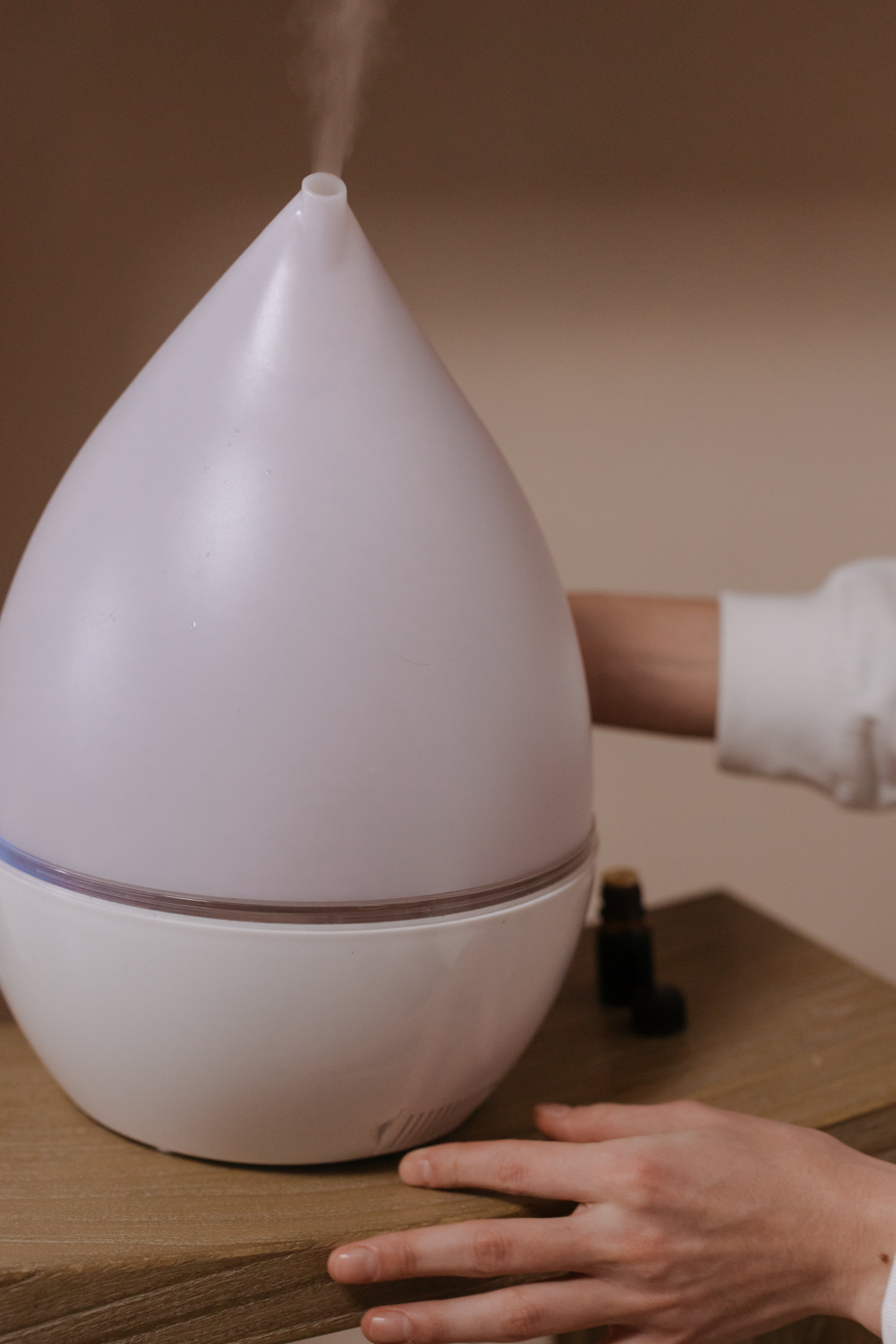
According to the Forest Products Laboratory, wood is a hygroscopic material, meaning it naturally absorbs and releases moisture to balance with its environment.
What does this mean for your home? When the air is desert-dry, your hardwood floors, wood furniture, and even musical instruments like pianos or guitars release their internal moisture. This causes the wood to shrink, leading to gaps in floorboards, cracked finishes on tables, and wobbly chair joints. Maintaining that 30-50% humidity level isn’t just for your sinuses; it’s a crucial act of preservation for your most valued belongings.
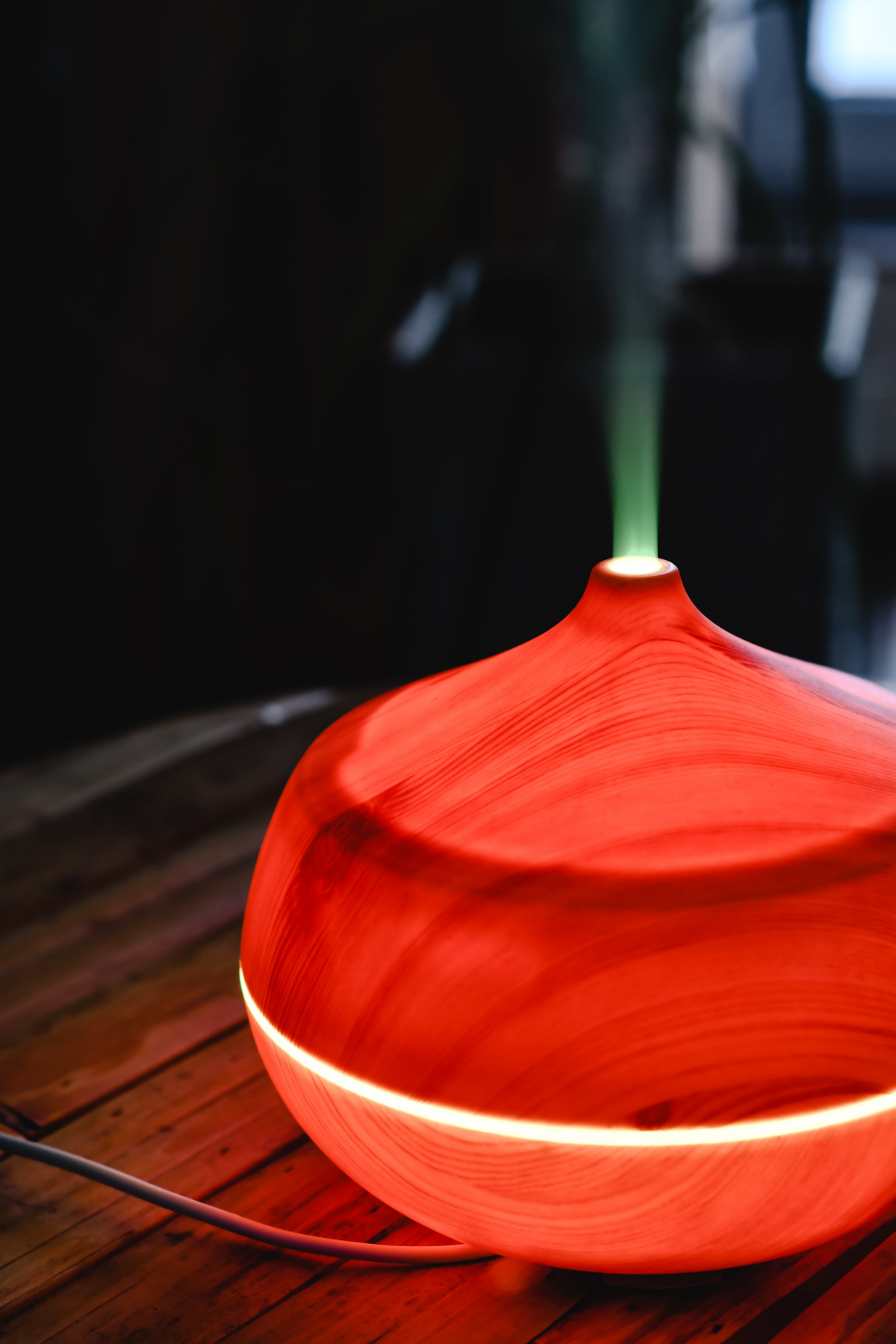
Thinking of adding a few drops of lavender oil to your humidifier for a good night’s sleep?
Hold on. Unless your device has a specific, separate tray or compartment for essential oils, you risk damaging it. Most oils can degrade the plastic of the water tank, causing it to crack and leak over time. They can also clog the internal mechanisms of ultrasonic models. Always check your user manual first. If you want both humidity and aromatherapy, look for a 2-in-1 model designed for it, like those from Canopy or Vicks, to keep your air—and your device—healthy.
A clean humidifier is a healthy humidifier. To avoid dispersing mold or bacteria into your air, adopt this simple routine:
- Daily: Empty, rinse, and dry the tank and base before refilling. This prevents slimy buildup.
- Weekly: Disinfect the unit. After rinsing, fill the tank with a solution of water and white vinegar (a 1:1 ratio works well) and let it sit for 20-30 minutes. Rinse thoroughly before use to prevent a vinegary smell.
- Water Choice: Always opt for distilled or demineralized water if you can. It’s free of the minerals that create that pesky white dust and build up inside the machine.










